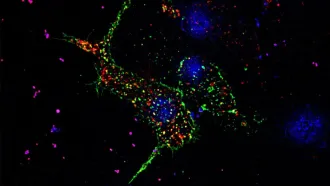
While the readers picked their choice of stories published on the website for 2017, here are the editors’ pick. Hope you enjoy them!
Whose cup of tea is it – ours or leopards’?
The British, fond of their tea, converted the dense green forests of the North East India into tea gardens. Further expansion of human settlement around these areas disrupted the wildlife, of which the leopards form a major part. This story describes the invisible link between leopards, and a cup of tea that you sip in oblivion. The story, through its narration, brings forward the escalating instances of human-leopard conflict, probing into the details of the kind of conflicts and the reasons behind the same. So, are leopards really at the offensive, or are they just defensive? Is this yet another example of how our greed has altered ecology? The story definitely makes one reflect on these questions, while you sip on your tea, in the backdrop of the rising human-wildlife conflict all over the world. What best can you do about them?
A made-in-India transistor that can make India’s IoT technology a reality
Researchers at the Indian Institute of Technology Bombay (IITB), in a collaborative effort with ISRO’s Semiconductor Labs (SCL), Chandigarh, have developed a completely indigenous Bipolar Junction Transistor (BJT) that can work with the other type of transistor called BiCMOS. BJTs are touted to play a big role in the Internet of things (IoT) applications. A major milestone of Centre for Excellence in Nanoelectronics (CEN) under the “Make in India” initiative, the indigenous transistor reduces the dependence on multinational semiconductor manufacturers and is a major advantage for India’s space and defence projects.
Type-2 Diabetes: A burden of our evolution?
Diabetes mellitus, or diabetes as it is commonly called, is a chronic disease affecting around 50 million people in India. Known as the ‘diabetes capital of the world’, the country is struggling to cope with the disease with conventional insulin based drugs. But what if our understanding of the disease is all wrong? That is why this research in focus is important. Instead of blaming our pancreas for diabetes, the research from IISER Pune looks at a very different aspect of the origin of the disease, attributing it to our evolution. A lucid writing explaining the tenets of the disease and how evolution is in the middle of the diabetes puzzle, the article makes one question our basic understanding of diseases, and hence the effectiveness of available ‘treatments’.
Satellite images show green cover of Bangalore reducing alarmingly fast
Tracking the journey of Bengaluru from ‘Garden city’ to ‘Silicon Valley of India’, scientists from the Indian Institute of Technology, Kharagpur and the Indian Institute of Science, Bengaluru, bring to us the starking loss of tree cover in the city. With pollution levels in Indian cities reaching extremely unsafe levels (think recent smog episodes in Delhi), such studies that introspect the ‘cost’ of development is important to draw our attention to ways in which we can keep our cities healthy. The study is also an example of how modern-day technologies like satellite data can be used to conduct large scale studies which have implications for conservation. The story goes a step ahead to give us a glimpse into the future of Bengaluru, if we were to axe trees at the same rate. The narration, coupled with graphics that take home the point, makes us question what part we can play in finding a solution to urban deforestation.
A long goodbye to Cassini-Huygens
The year 2017 witnessed a spectacular end to the two decade long space voyage of Cassini Huygens -- a mission to Saturn. The only man-made object to land on a moon of another planet, Cassini-Huygens made exciting discoveries about the ringed planet and its moons, thus increasing our understanding about these. With nuclear threats and climate change forcing us to pack our bags and move out of Earth, missions like Cassini- Huygens are crucial to understand the composition and atmosphere of planets and help us decide if we can ever call them ‘home’. In this fascinating article detaining the mission, the writer takes us on a journey across four planets--Venus, Mars, Jupiter and Saturn--and on to Titan, Saturn’s moon. So, what did Cassini-Huygens discover in two long decades? Much more than we expected, including a clue to extraterrestrial life. The fruitful mission was finally bid adieu in September 2017, when the spacecraft crashed into Saturn’s rings.






